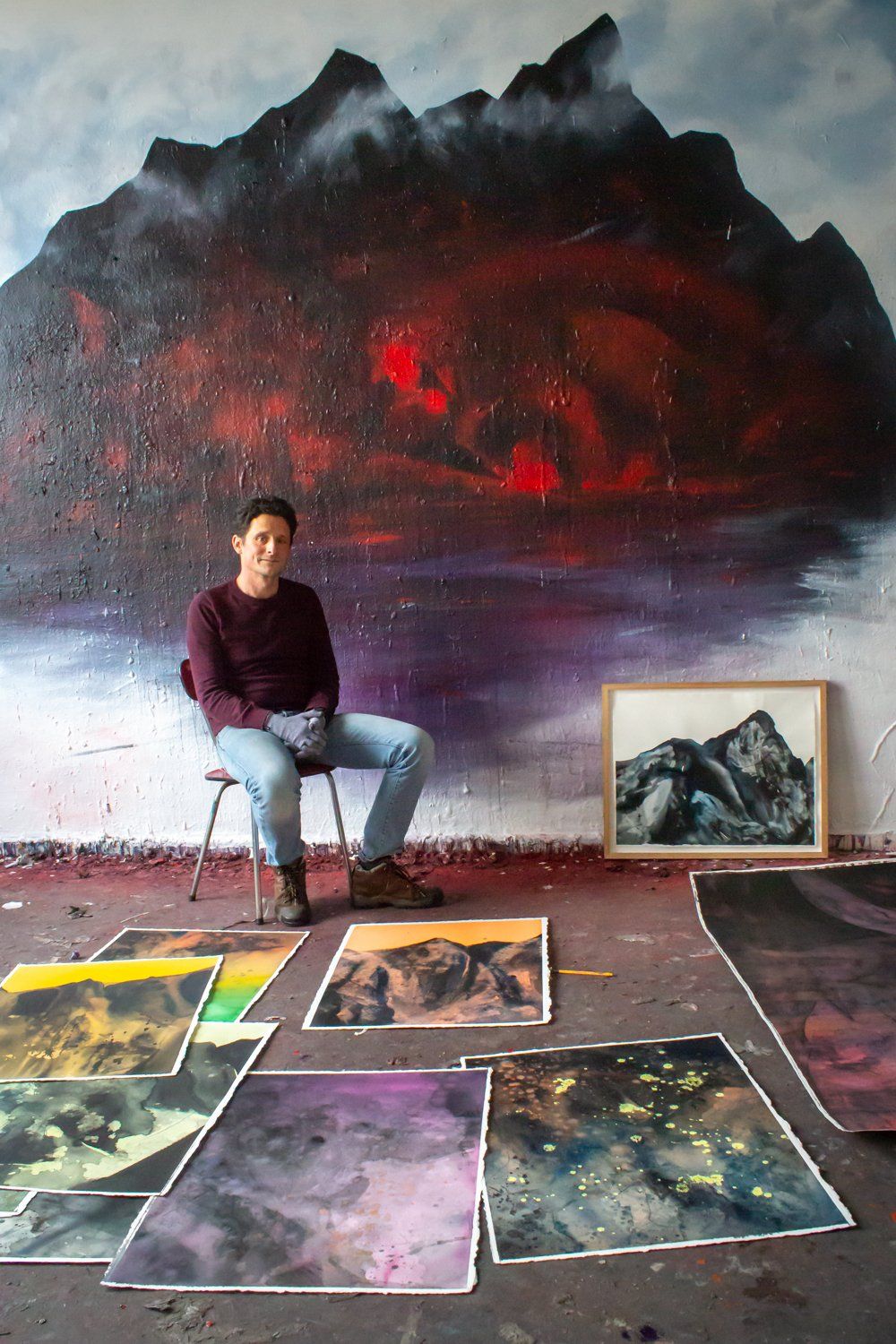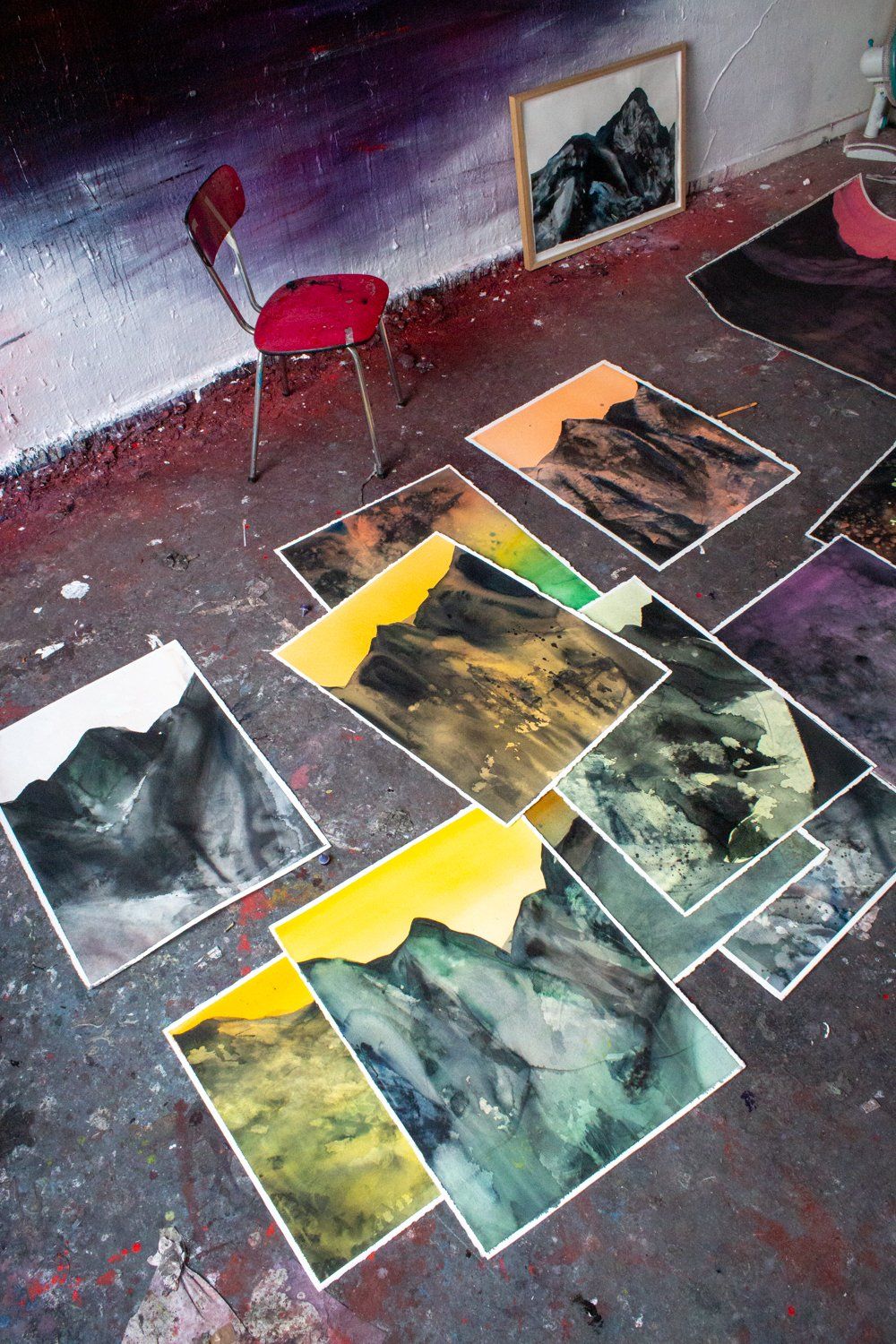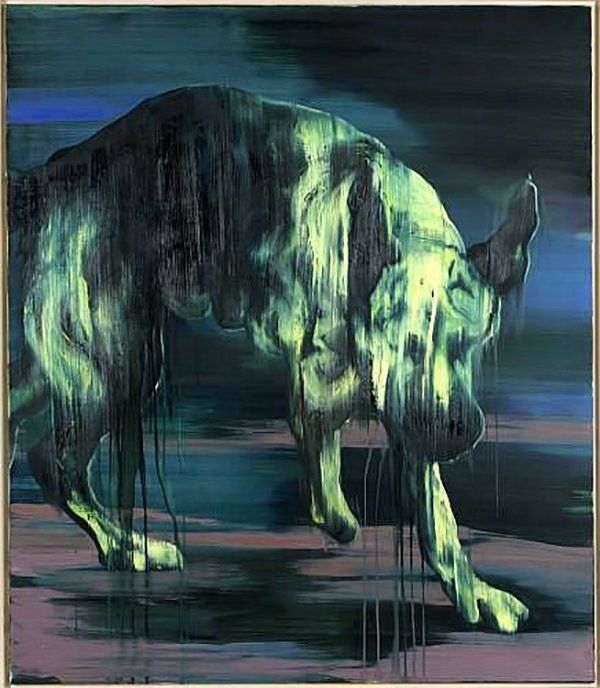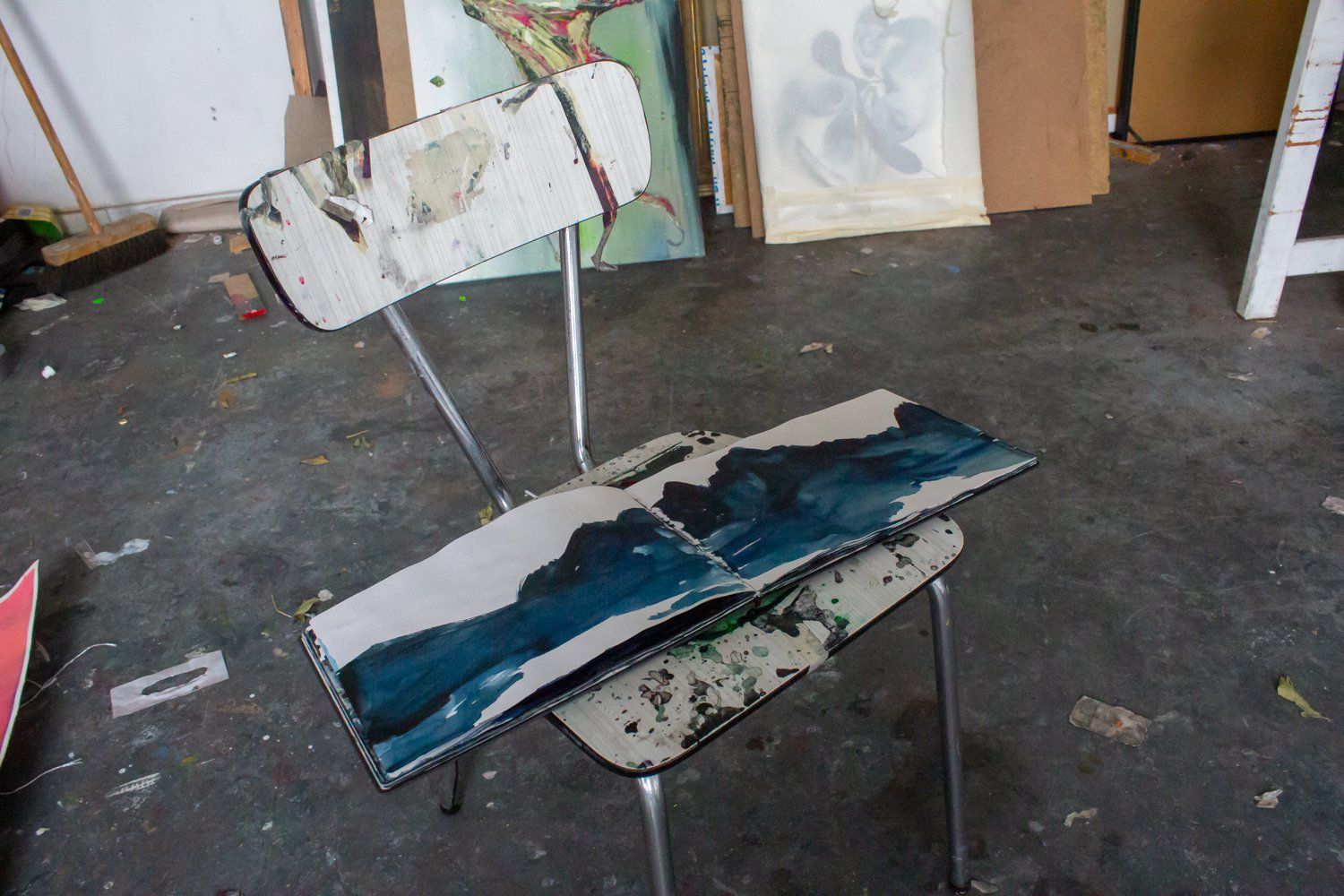Simon Schrikker, master of suspense
He used to paint dangerous-looking dogs and played with our associations with danger. Now Simon Schrikker focuses on rough seascapes in distant places. On a cold winter afternoon, I decided to put on my raincoat and visit the studio of a driven and fascinating artist who also happens to live in…

He used to paint dangerous-looking dogs and played with our associations with danger. Now Simon Schrikker focuses on rough seascapes in distant places. On a cold winter afternoon, I decided to put on my raincoat and visit the studio of a driven and fascinating artist who also happens to live in my neighborhood. “My art arouses suspense, that Hitchcock feeling.”
Kunstuitleen Rotterdam recently purchased some of Simon Schrikker’s aquarelles that are now available for borrowing.


Personally, I think your work is amazing. But I can also imagine people seeing it and thinking to themselves: “This is not exactly cheerful!”
I definitely keep that in mind. Some of my works end up in large private and corporate collections. That being said, movies don’t necessarily need to be cheerful, right? What I show in my work, is not literally violent. It’s more of an association. My primary goal is not to please consumers. In the end, what I do is not very commercial. But I do try to deliver quality to a very specific group of aficionados.
I’d love to hear how you’ve come to where you are now. What is your story?
I used to draw a lot as a child. I never had an alternative, come to think of it. I was very eager and wanted to learn everything there was. My mother used to work as a structural engineer. As a seven-year old boy, there was nothing I loved more than going to work with her. In her office, she had this beautiful drawing table and those thick Edding markers. It was a wonderful experience to draw with them and then watch the ink spread on the paper. And that scent! It’s one of the first good memories I have of material. I had that fascination from an early age, I guess.
Which drawing from that time do you remember in particular?
There’s one that I remember vividly. It was a drawing of a man with little drawers in his belly. I still wonder what the idea behind it was. What I can tell you, though, is that is was a very complex drawing for a child. I really lived in my own world that I didn’t come out of until after I went to Art Academy in the town of Enschede. A teacher who had a profound influence on me, was artist Emo Verkerk. He used to say, “You can continue painting abstract pieces until the day you die. But wouldn’t it be interesting if you take something from the world around you so that your work can be captured by a wider audience?”


I know you through the fascinating paintings you used to make of dogs. How did you arrive at that particular theme?
One time, I was working on a painting of a swamp-like landscape with a deer and stumbled upon this beautiful photo of a Rottweiler. I painted it over the deer on a whim. By doing so, I found out that painting from a photo can be quite interesting. I started exploring the boundary between the image and the paint I was using to make it. The tension between the two has always been a theme of my work.
How do you explore that boundary?
I do so while I’m painting. It’s not something you can think up in advance. Most of the time, I just do it. Sometimes it works, sometimes it doesn’t. The dogs are interesting because you can project your own associations onto them. It’s a theme that suggests danger or suspense. But you could also think of it as the neigbor’s dog chasing a ball. It all depends on how you look at it.


This untitled work by Simon Schrikker was already part of the Kunstuitleen Rotterdam collection.
When they see a dog they don’t know, many people try to estimate if it won’t bite. Is that it?
The combination of dogs and my painting technique has a filmic quality. It arouses suspense, that Hitchcock feeling. I didn’t grow up with dogs myself and even used to be a little scared of them. I found dogs hard to read. Our current dog is very sweet. We’ve had him since he was a small as a guinea pig. But still, our children sometimes bring playdates who run around the living room hysterically when all our poor dog wants to do is play along.
You use enormous amounts of paint in your work. Does that technique allow you to depict movement?
All that paint is particularly nice to portray the heads of bulldogs. They have these lobes that you look great in thick gobs of paint. Right now, I’m moving to new themes. I rarely paint dogs anymore. I made an exception for a woman who had sent me a portrait of her English springer spaniel. It’s a race that I don’t particularly care for. But when the woman agreed to my proposal to turn it into a massive painting, it became something special after all.


What are you working on at the moment?
A while ago, I found an image of a shark. I thought it would be nice to see a fin or a row of shark’s teeth rising from a thick layer of paint. Through my research, I found the Farallon Islands, a barren place not far from the coast of San Francisco. The contrast between such a cosmopolitan city and a formation of rocks that look like shark’s teeth is enormous. Also, a group of about forty white sharks comes to the Farallon Islands once a year and then stay there for one month. Nobody knows why. That really captured my imagination, it’s almost a fairytale. As an artist, I can do a lot with a theme like that.
How do you start painting when you have an empty canvas in front of you?
I choose which technique and which colors I’m going to use in advance. I also make sure that I have a starting point. After that, it’s basically a matter of smearing out the paint. For some of my works, I’ve used hundreds of euro’s worth of oil paint. When I’m working on painting, I keep saying to myself, “This has to work, this has to work!” Lately, I’ve been making aquarelles as well. I first do these little studies in a sketch book. I usually make them at home, sitting at the kitchen table – a totally new experience. Kunstuitleen Rotterdam recently purchased a few of my aquarelles. You can borrow them now. They are seascapes near the Lofoten Islands in Norway. The roughness, the reflection of the water, the barren circumstances…they’re all very appealing to me.
